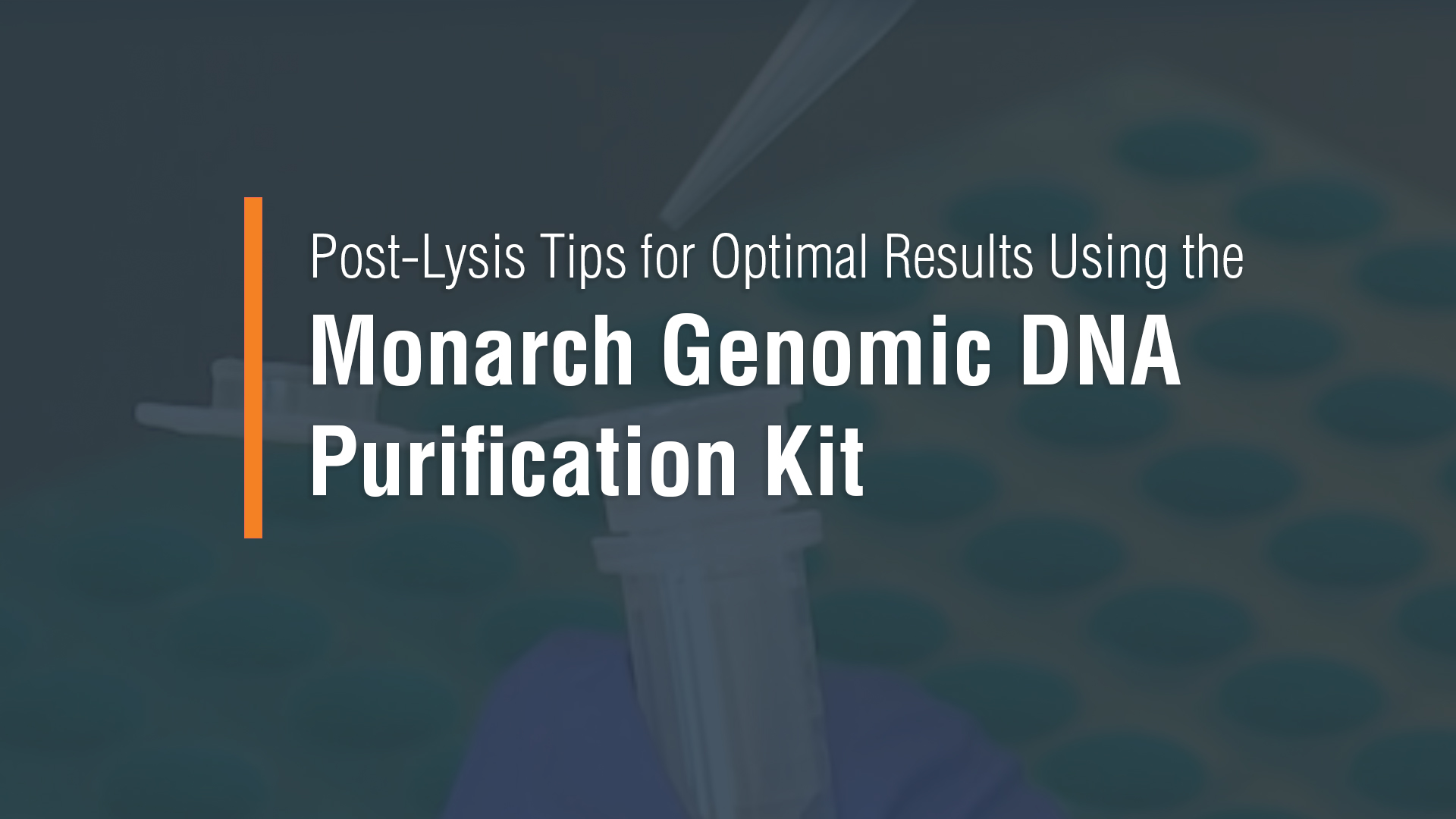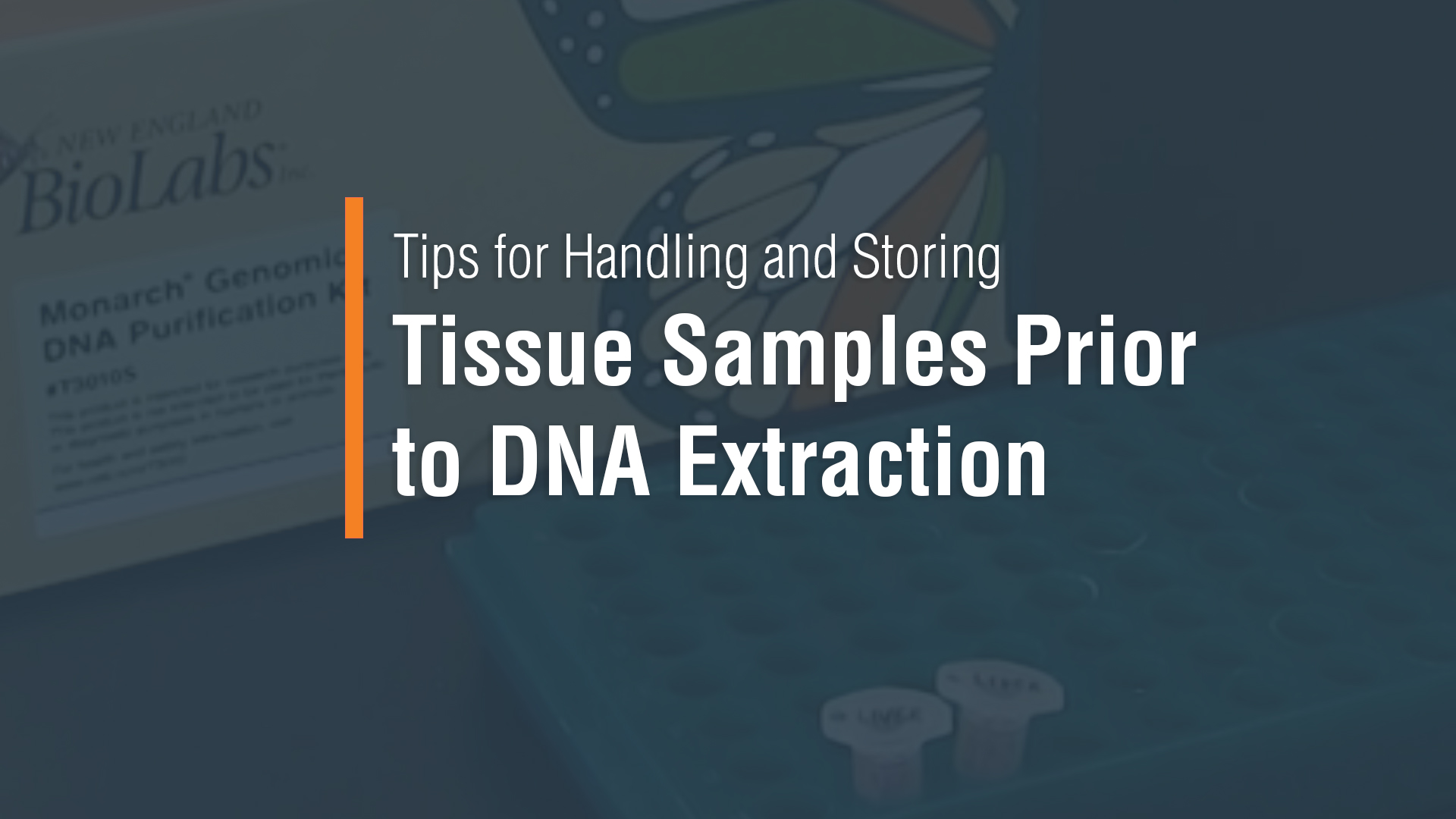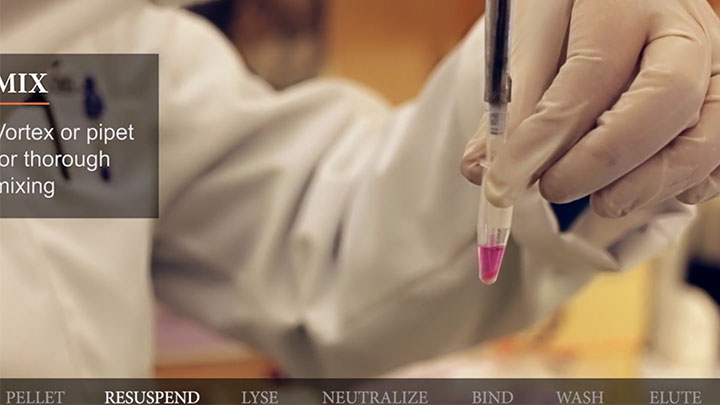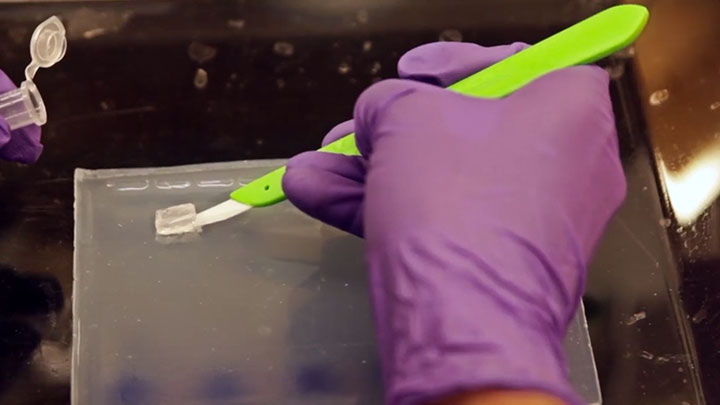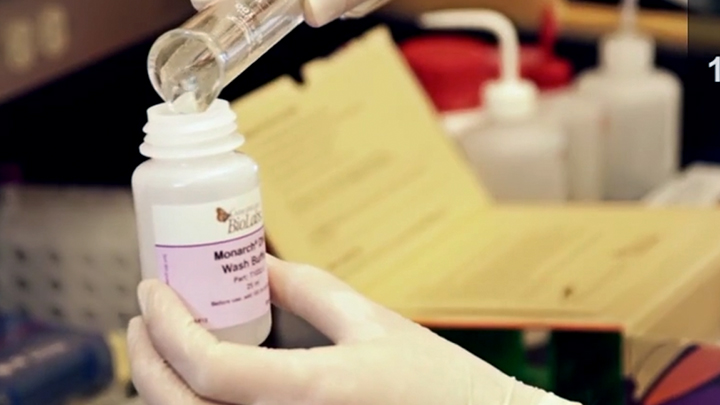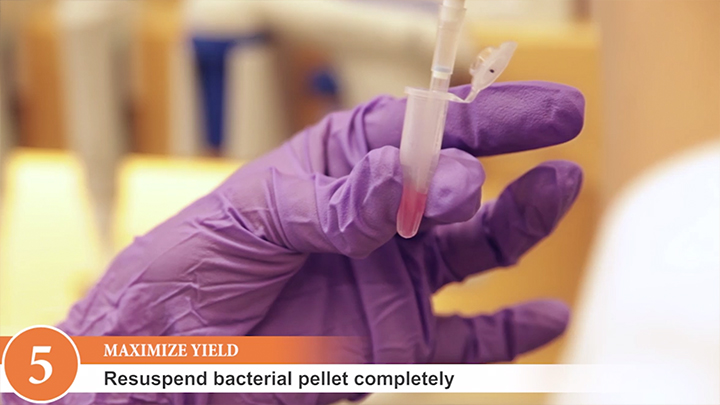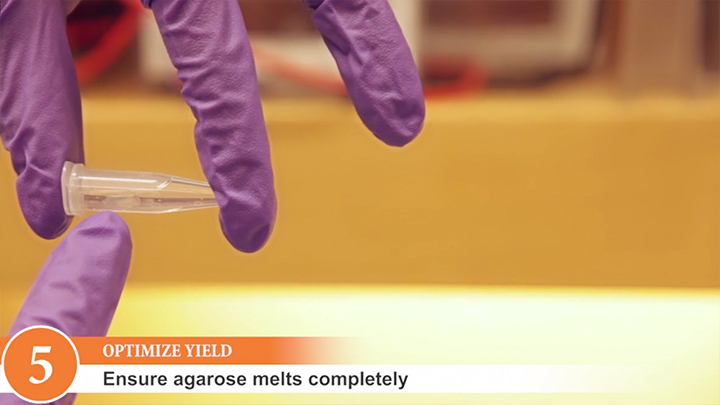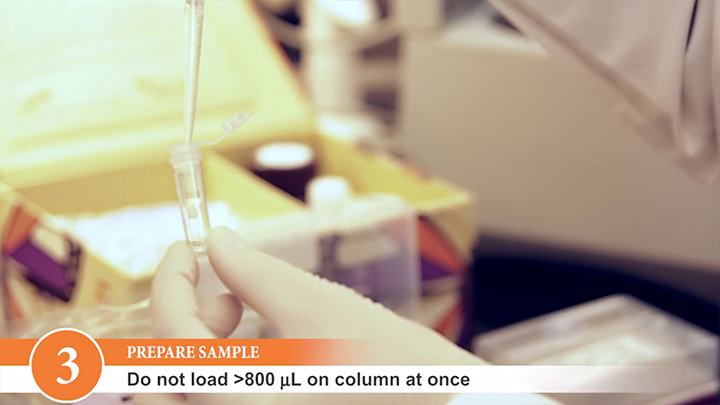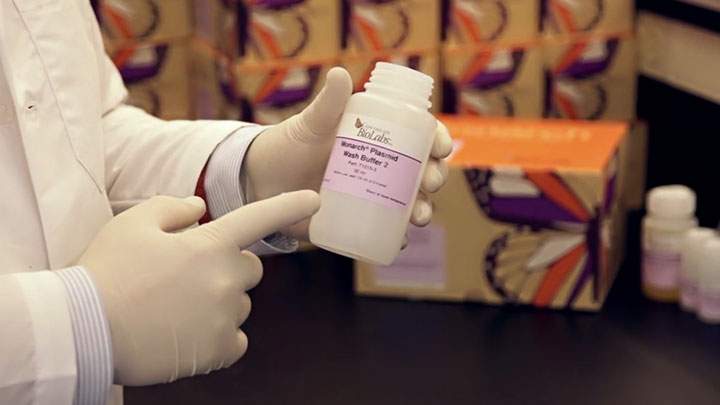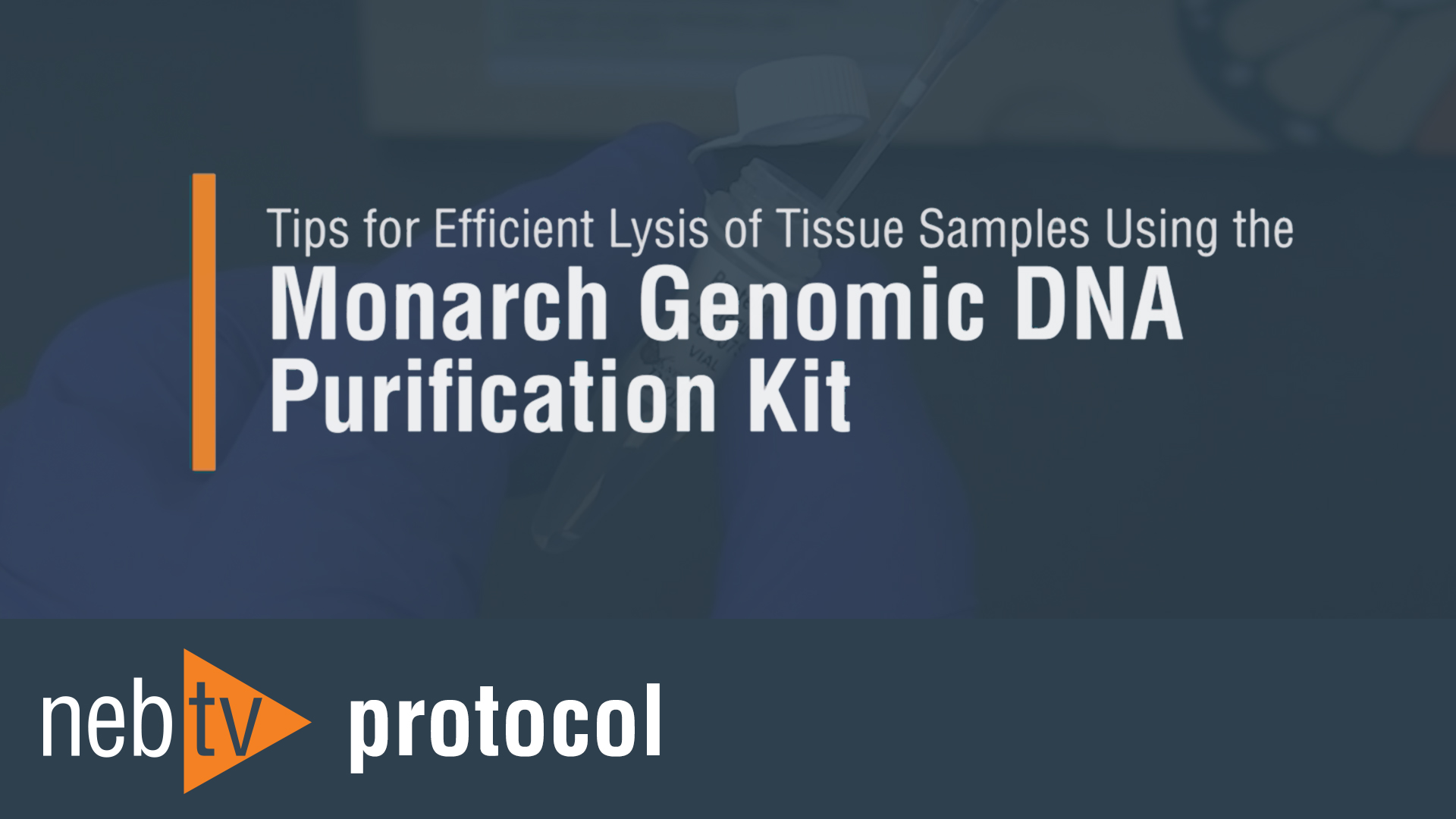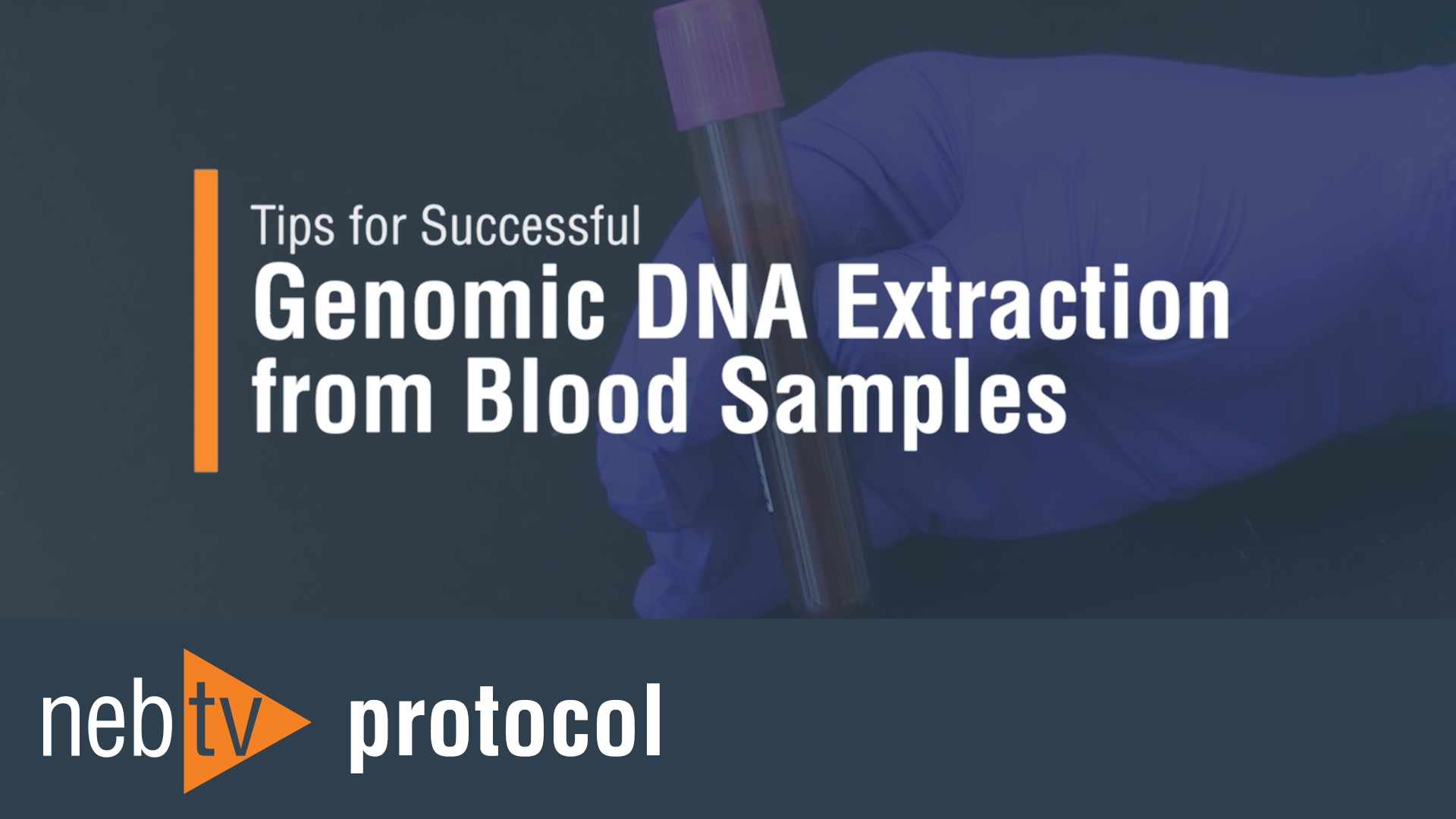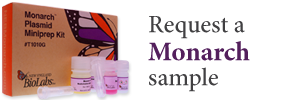
Nucleic Acid Purification
Choose Type:
- Are plasmids recovered using the Monarch Plasmid Miniprep Kit endotoxin free?
- Can I use the Monarch DNA & PCR Cleanup Kit to purify oligonucleotides and other short DNA fragments?
- I have used 5 ml of cell culture for plasmid isolation with the Monarch Plasmid Miniprep kit and I am obtaining low amounts of plasmid and/or contaminating gDNA. Why is this, and what are your suggestions to improve yield and purity?
- Monarch® Plasmid DNA Miniprep Kit Protocol (NEB #T1010)
- Monarch® DNA Gel Extraction Kit Protocol (NEB #T1020)
- Protocol for DNA Cleanup and Concentration Using the Monarch® PCR & DNA Cleanup Kit (5 μg) (NEB #T1030)
- Oligonucleotide Cleanup Using Monarch® PCR & DNA Cleanup Kit (5 μg) Protocol (NEB #T1030)
- Quick Protocol for Extraction and Purification of Genomic DNA
- Genomic DNA Cleanup Protocol
- DNA Purification from Agarose Gels using Beta Agarase I (NEB #M0392)
-
Five Steps to a Greener Lab: A roadmap to environmental action
The laboratory is a place of inspiration, curiosity, ingenuity, and often altruism. Researchers are, by and large, a thoughtful and deeply invested group, but the environmental and ecological consequences of life science research are not typically at the forefront of researchers’ minds when planning their investigations.
- Troubleshooting Guide for DNA Cleanup and Plasmid Purification
- Troubleshooting Guide for Genomic DNA Extraction & Purification (NEB #T3010)
- Back to basics: Important things to keep in mind when purifying plasmids and DNA fragments
- Dos and Don'ts of Plasmid Minipreps
- Six Tips for a Perfect Gel Extraction
- Usage Guidelines for the Monarch Plasmid Miniprep Kit (#T1010) When Working with Low Copy Plasmids
Feature Articles
Troubleshooting Guides
Usage Guidelines
Products and content are covered by one or more patents, trademarks and/or copyrights owned or controlled by New England Biolabs, Inc (NEB). The use of trademark symbols does not necessarily indicate that the name is trademarked in the country where it is being read; it indicates where the content was originally developed. The use of this product may require the buyer to obtain additional third-party intellectual property rights for certain applications. For more information, please email busdev@neb.com.
This product is intended for research purposes only. This product is not intended to be used for therapeutic or diagnostic purposes in humans or animals.
